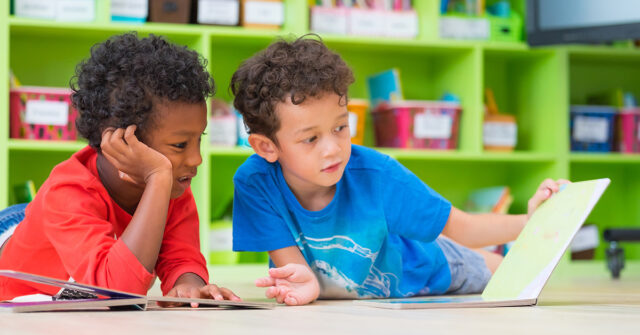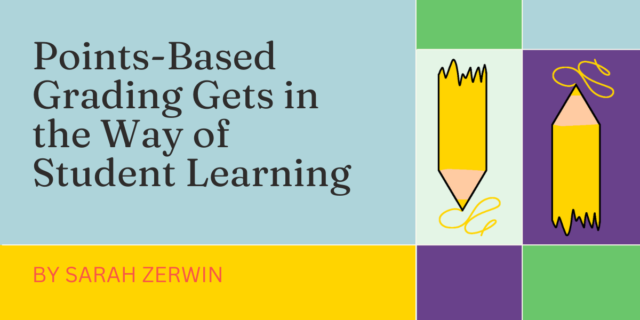
Kids need to become powerful, effective readers who tackle complex texts with confidence. Teaching comprehension strategies creates skilled, thoughtful readers who build knowledge and understanding through real world reading.
One thing we do know: capable, confident readers read and think flexibly and critically about content AND perform effectively on the test. For example, when young test takers come to a word they can’t read or an idea they don’t understand, a comprehension strategy such as inferring the meaning of unfamiliar words can get them through and allow them to move on with understanding.
Building a Foundation of Thinking
Content literacy is about building a foundation of thinking, so kids acquire and actively use knowledge in science, social studies, and other subject areas. Strategies give kids the tools to turn information into knowledge by thinking about it.
No one can do the thinking for kids; they must construct meaning themselves. But we can teach them how to think about the information.
Strong readers:
- become aware of and monitor their thinking and understanding
- build a repertoire of strategies as tools for comprehending
- learn to recognize the power of their own thinking, which builds their confidence and capability as readers
Teaching Test-Ready Comprehension Strategies
Here are a few ways to teach comprehension in the content areas—paired with free lessons to download and try. These practices effectively prepare kids for test reading and responding—at the same time, we believe students will become better readers outside of test reading, as well!
Modeling reading comprehension strategies
With our comprehension and content lessons, we model strategies to read for understanding so kids can zero in on important information and summarize big ideas in the text. We take time to guide their strategy practice initially, and then release them to use these strategies independently.
When responding on the test, students must answer open-ended questions which demonstrate their understanding. When they understand how to draw inferences and conclusions based on evidence, determine importance, and summarize and synthesize information, they are equipped to answer these kinds of questions.
Building background knowledge
As students build their knowledge through reading, they create a foundation that in turn supports ongoing thinking, learning, and understanding. Background knowledge is not simply about the facts and information that kids bring to the classroom.
When they read to understand the content in science and social studies, they are broadening and building their knowledge store every day. The more content knowledge we have, the more likely we are to grow it. We selected the texts in Comprehension Toolkit and the Content Literacy books for their compelling content and diversity. They highlight bigger ideas, central concepts, and key understandings in the disciplines of science and social studies.
Turn information into knowledge
One of the main reasons we teach strategies is to foster understanding of new information and hurdle the background knowledge gap. When we encounter unfamiliar information and new ideas, strategies can be the readers’ superpower.
When kids use tools, such as making inferences, asking questions, and synthesizing the information as they read, they are not only making sense of the information but actively using knowledge. Students are empowered to gather evidence, talk, and write about their new learning.
Preparing for Tests with The Comprehension Toolkit and Content Literacy Books
The Comprehension Toolkit, Content Literacy (Primary), and Content Literacy (Intermediate) provide support for teaching comprehension across the curriculum, including building knowledge and understanding that is required on state assessments.
The Content Literacy books engages kids in texts and lessons that teach a repertoire of strategies. Building on the comprehension strategies in the Toolkit series, the Content Literacy lessons integrate all comprehension strategies.
In real world reading, we don’t just read using one strategy in isolation. We combine several strategies to better understand and support content-area learning. The lessons in these resources help students apply multiple comprehension strategies to complex literacy tasks—like tasks found in many tests or state assessments—such as:
- how to read several pieces of text and summarize and synthesize the information
- how to infer and draw conclusions from text evidence
- how to determine important ideas and information
- how to talk to each other and collaborate on topics
- how to debate or create an argument
Using the Lesson Resources Most Effectively
The lessons in the Content Literacy books and Comprehension Toolkit are grounded in science and social studies; they reflect some of the varied ways we think and learn in different disciplines. Below are three ways you can get the most out of the lessons and practices provided.
Teaching Thinking Routines
So even though you may not be studying colonial times, sharks, or climate change, the thinking routines and processes that we teach are applicable to any of your science and social studies topics and texts. They are designed to teach our kids ways to get the most out of their nonfiction reading so they can build content knowledge and effectively use it.
Summarizing and Synthesizing through Talk
In these lessons, you will notice extensive conversations between teachers and kids and among the kids themselves. We have included these dialogues to illustrate how kids internalize a common language of comprehension to express their learning and understanding and how we respond to it.
Some of this common strategy language relates to the processes that kids use to grapple with meaning in the text, make sense of unfamiliar concepts, and work out their thinking with each other. Other aspects of this language illustrate how kids talk about their thinking as they summarize and synthesize information across multiple texts.
Using Your Own Texts and Topics
Each lesson works with many kinds of content-related texts. You may choose to use our texts to launch the lessons and comprehension practices. Next, teach these with your own texts, topics, and units. The lesson frame at the beginning of each unit includes only the lesson moves and some teaching language. The topic-specific content has been stripped away. These frames serve as a scaffold as you create your own lessons with your own texts and topics.

Steph Harvey and Anne Goudvis are the coauthors of Strategies That Work, Inquiry Illuminated, The Comprehension Toolkit Series and Short Nonfiction for American History. Teachers first and foremost, they work in classrooms side by side with kids supporting teachers in progressive literacy practices.


